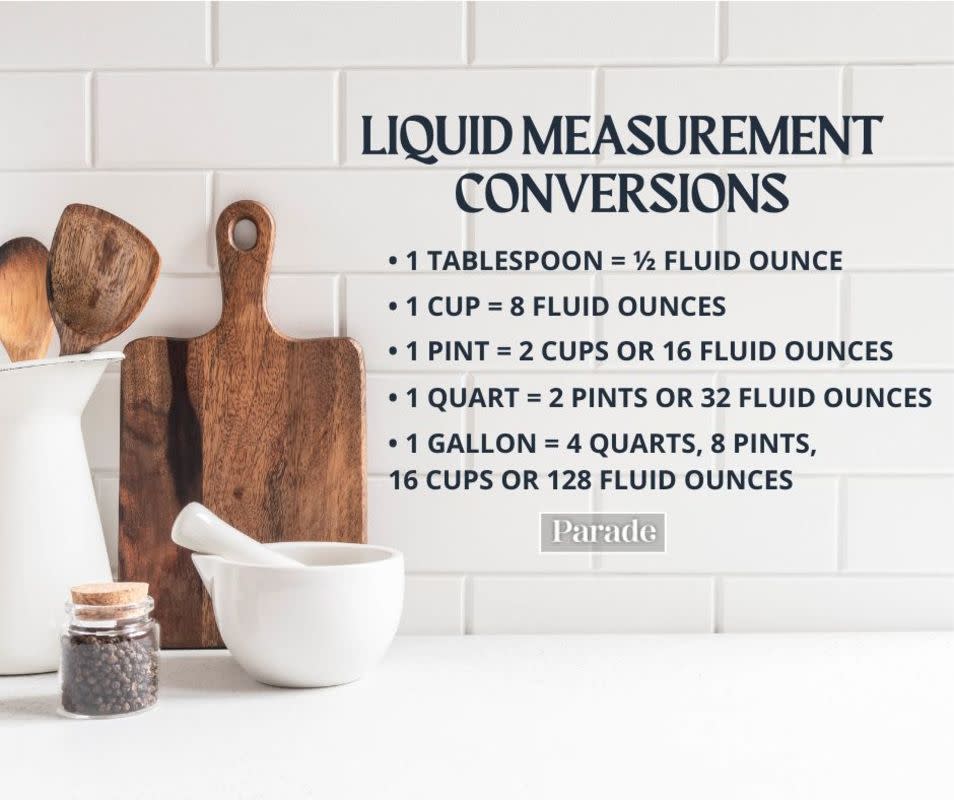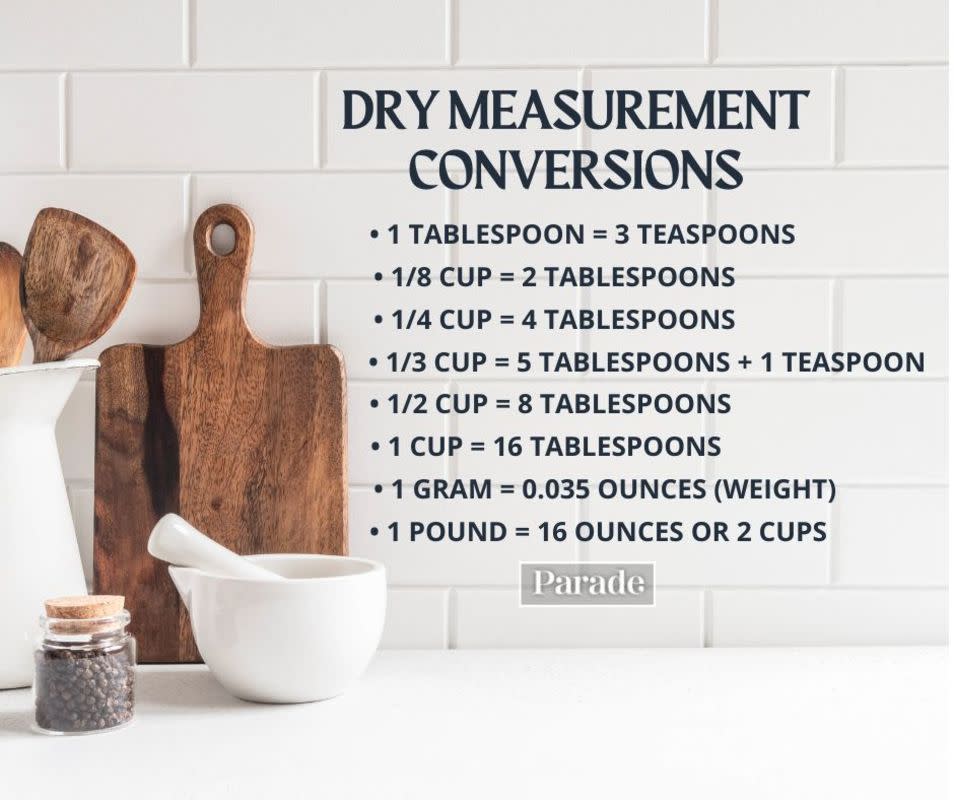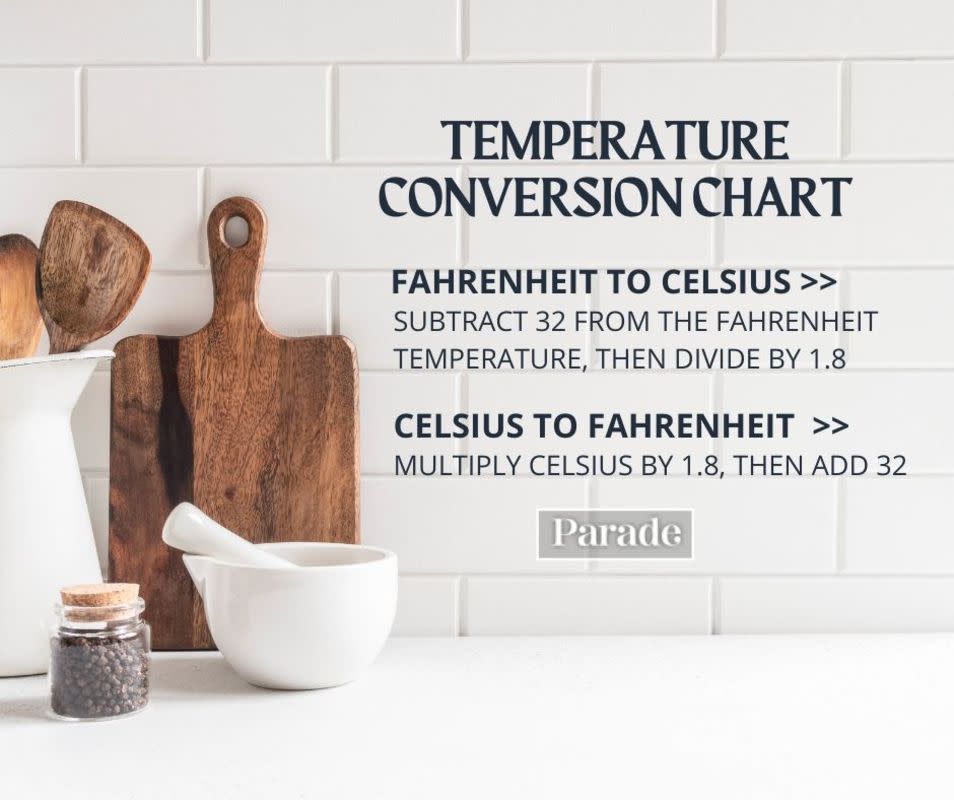Wait, How Many Cups Are In a Gallon? Here's an Easy Way to Remember

Measuring into a large measuring cup
When I worked in professional kitchens, I frequently referred to my measurement cheat sheets in my pocket notebook. Pretty soon, I didn’t need to peek at them anymore. With continued use, I had basic culinary measurements like how many ounces are in a cup memorized.
But knowing basic culinary conversions isn't just for chefs. That info is handy for simple culinary tasks. Say you want to make a gallon of iced tea. Do you know how many cups it can make without looking at the package? To add more complexity, answering such a question depends on whether you need it for dry or liquid measurement.
Whether you're adjusting temperatures, doubling a recipe or substituting ingredients, it’s important to understand the measurements you're working with to make sure whatever you're making turns out.
To help make sure you're prepared in the kitchen, we'll start with some basic questions, like how many cups in a gallon, then build from there.
Related: How Many Teaspoons in a Tablespoon?
How Many Cups in a Gallon?
There are 16 cups in one gallon for liquid measurement. A gallon is a unit of volume measurement for liquids. One gallon also equals 128 fluid ounces, 4 quarts or 8 pints. A simple way to visualize this measurement is to think of a gallon of milk or water, just divided into 16 cups. If you prefer a pneumonic device, you can think, "This gal (for gallon) just turned sweet 16."
For dry measurements, 18.6 cups equals one gallon. Dry measurements refer to bulk items that aren’t liquid, such as grains, fruits or vegetables.
Dry vs. Liquid Measurements
When it comes to measuring ingredients for a recipe, you’ll need measuring cups and measuring spoons. Cup sizes from smallest to largest are 1/8 cup, 1/4 cup, 1/3 cup, 1/2 cup and 1 cup. Standard measuring spoon sizes are 1/4 teaspoon, 1/2 teaspoon, 1 teaspoon, 1/2 tablespoon and 1 tablespoon.
With some caveats, measuring cups and spoons can be used for liquid or dry ingredients. Liquid measuring cups make it easy to pour liquids, and their containers are marked in cups, fluid ounces and milliliters. Dry ingredients, like sugar, are typically scooped or poured into a measuring cup then leveled with a straight edge to ensure accuracy.
What causes confusion for some people is when a recipe calls for “fluid ounces” and/or “ounces.” Both are units of measurement, but one is used to measure volume (fluid ounces) and the other is to measure weight (ounces or mass). Remember, liquid (honey, cream, etc.) is measured in fluid ounces, while solid things (rice, flour, etc.) are measured in regular ounces.
Which System of Measurement Does the United States Use?
Our system of measurement is the US Customary System, which includes units like ounces, fluid ounces and gallons. Since our system is partially based on British Imperial Measurement System units, it’s also common to see pounds and grams in recipes.
Essential Culinary Conversion Charts
Keep these charts handy so you can refer to them as you're cooking.
Liquid Measurement Conversions

Canva
1 tablespoon = 1/2 fluid ounce
1 cup = 8 fluid ounces
1 pint = 2 cups or 16 fluid ounces
1 quart = 2 pints or 32 fluid ounces
1 gallon = 4 quarts, 8 pints, 16 cups or 128 fluid ounces
Dry Measurement Conversions

Canva
1 tablespoon = 3 teaspoons
1/8 cup = 2 tablespoons
1/4 cup = 4 tablespoons
1/3 cup = 5 tablespoons + 1 teaspoon
1/2 cup = 8 tablespoons
1 cup = 16 tablespoons
1 gram = 0.035 ounces (weight)
1 pound = 16 ounces or 2 cups
Temperature Conversions

Canva
To convert Fahrenheit to Celsius, subtract 32 from the Fahrenheit temperature, then divide by 1.8.
To convert Celcius to Fahrenheit, multiply the Celsius temperature by 1.8, then add 32.
Up next: The Part of Your Microwave You're Probably Not Cleaning






